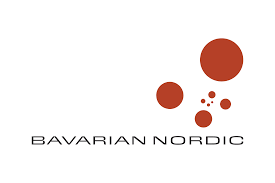In the space of a week, two Danish design companies have announced they will be moving their production out of the country: the furniture giant Fritz Hansen and porcelain manufacturer Royal Copenhagen.
Fritz Hansen’s decision, particularly, to outsource its production to Poland, prompted a passionate response from within the media and has led to a nationwide debate about the viability of the Danish industrial model and labour market.
Breaking the news, liberal business daily Børsen was sympathetic to the complaints of Fritz Hansen CEO Jacob Holm, who lambasted high Danish salaries and taxes. But Politiken newspaper branded Børsen’s idea a “losing strategy” and instead advocated better training for Danish workers as a way to help them clinch highly-skilled positions and to allow the Danish manufacturing industry to specialise in high-quality products.
Deindustrialisation is a European-wide phenomenon that decimated the Danish shipbuilding industry, while also levelling the furniture manufacturing sector, which employed 23,000 workers in 1993, compared to 11,000 today.
“The new trend is that typically Danish brand names are leaving the country,” Kim Sundtoft Hald, an associate professor at the Copenhagen Business School (CBS), said. “Before, these companies thought it could hurt their brands to be produced outside of Denmark.”
And Denmark cannot compete with salaries in eastern European. According to 2010 Eurostat figures, the average annual salary for full-time Danish employees was 437,893 kroner before tax, which was the highest in Europe. In the same year, the average annual Polish salary amounted to a seventh of that figure: 70,216 kroner.
“We can never go back to competing with other countries in labour-intensive businesses,” Hald said.
The situation is not all doom and gloom, however. The Danish manufacturing industry is also managing to attract jobs to the country.
According to a 2006 paper by the Institute for International Economics, between 2002 and 2005, 30 percent of Danish companies created jobs in Denmark while 23 percent of Danish companies had moved part of their production chain abroad.
Most of the outsourced positions were in the manufacturing sector, while the majority of the created jobs were highly-skilled, research and development positions. But according to the paper’s co-author, Nicolai Søndergaard Laugesen, these activities are interdependent.
“If we do not keep some of the manufacturing, we will also lose the research and development,” he said. According to Laugesen, the trick to keeping jobs in Denmark will be further integrating manufacturing and research. He particularly advises the use of so-called ‘rapid manufacturing techniques’, which are a series of industrial strategies that enable companies to quickly move from the first sketch on a piece of paper to the final product through the use of prototyping technologies such as computer-aided design or 3D printing.
Hanne Shaprio from the Danish Technological Institute explained that major Danish companies have already integrated these mechanisms in their production chain. Big businesses such as Lego, or the medical equipment designer and manufacturer Coloplast, have accelerated their production cycles, producing prototypes faster and outsmarting competitors through innovation.
Shapiro acknowledges, however, that Danish manufacturing may run into problems as it is mostly composed of small and medium-sized enterprises that, unlike Coloplast or Lego, will struggle to gain access to these technologies.
The requirements of rapid manufacturing are also likely to bring new strains on the Danish state. Their intensive use of technology will require future manufacturing workers to be more skilled than their predecessors in the production chain, which in turn places pressure on universities and colleges to train sufficient numbers of workers to fill the roles.
While universities struggle to provide training for everyone that wants it, it is still hoped that improving the training of manufacturing workers may just save the sector, which in 2010 accounted for 45 percent of Danish exports and employed 350,000 people.













